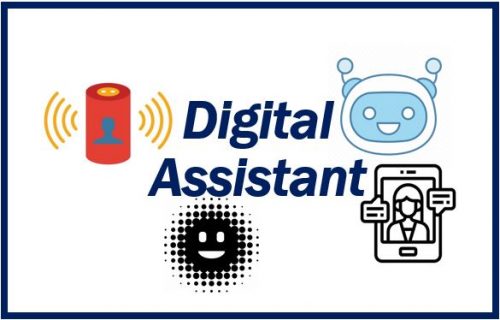Digital assistants are becoming more popular, present in a number of popular apps and being used for a wider range of functions. By now, most consumers are familiar with Siri, the digital assistant associated with iOS devices, and Alexa, associated with devices from Amazon. Now, an even broader range of digital assistants are available, including Cleo, which is designed to help people with budgeting.

However, merely adopting a digital assistant isn’t a guarantee that you’re going to save time or achieve more. If you want to make the most of these versatile technological assets, you’ll need to begin using them with the right mindset.
The Best Benefits of Digital Assistants
We’ll start by exploring the best benefits of digital assistants. These are the perks you should be optimizing your strategy to achieve:
-
Automation: Digital assistants are fantastic for automating your life. They can handle things on your behalf, whether it’s scheduling appointments, ordering specific products, or making notes to review later. You can employ them to take care of micro-tasks that would otherwise take up minutes of your time; over the course of a week, you might be able to save hours this way.
-
Notifications: Digital assistants are also good at providing notifications in response to specific triggers. For example, you might get a 15-minute warning when you have a meeting coming up, or you might get a reminder to run an errand on your way home from work. These can help you keep your goals top of mind, and ensure that nothing gets lost in the shuffle.
-
Guidance: Some digital assistants are designed to provide you with guidance. They may be able to offer you specific pieces of advice on a given topic, or help you resolve questions and concerns. In this way, assistants are a valuable way to retrieve information and learn new things.
-
Voice commands: Most digital assistants rely on voice commands to function, which is much more convenient than typing. And modern systems are as good at recognizing speech as other human beings—so there’s not much of a learning curve.
Evaluating Digital Assistants
How can you choose the “right” digital assistants for your productivity?
-
Specificity: Specific digital assistants tend to be more helpful than ones that are designed broadly. If an assistant is optimized for a specific task, or a specific category of tasks, it will likely be more competent in that field than an assistant that was designed generically. If you’re looking for help in one particular area, try to find an assistant that’s used for that area.
-
Robustness: How many things can this assistant help with? You can review the developer’s website to get more information. This assistant may be able to assist you in many ways, but it will certainly be limited in others. Make sure you understand these limitations.
-
Reviews and testimonials: What do you make of others’ experiences with this digital assistant? Do people seem to be consistently leaving good reviews and positive testimonials? Depending on the assistant, you may not have much to lose by trying it, but reviews are still a good indication of whether you’re wasting your time.
-
Experimentation: Finally, consider installing the digital assistant and just experimenting with it. The best way to evaluate whether it works for you is to try it—and even paid assistants usually offer free trials to new customers, so you won’t be out anything. Measure your results, if possible; are you genuinely saving time each day? Are you forgetting fewer items? Are you getting more information or achieving more?
Managing Costs and Drawbacks
While digital assistants can be very helpful, they aren’t perfect. There are a few costs and drawbacks to consider when managing your use of digital assistants.
-
Expenses: While some digital assistants are completely free, others come attached to a cost. If you’re paying $100 a month to use a digital assistant and it doesn’t seem to be beneficial, you’re wasting money.
-
App overload: There are a lot of apps that claim to help you be more efficient or more productive, but installing too many apps can work against you. With app overload, you’ll be spending more time managing apps than you will be doing actual work. Try to keep your experiments limited to one or two digital assistants at a time.
-
Privacy and tracking: You may also want to pay attention to the privacy policies and tracking associated with each digital assistant and app you install. Companies may be gathering your information without your knowledge.
In the coming years, digital assistants are going to become even more advanced—and serve more functions than we ever thought possible. As long as you’re following the core tenets listed above, you should be able to continue harnessing them and recognizing their full range of benefits.
Interesting Related Article: ” AI assistants Cortana and Alexa collaborating for first time“

